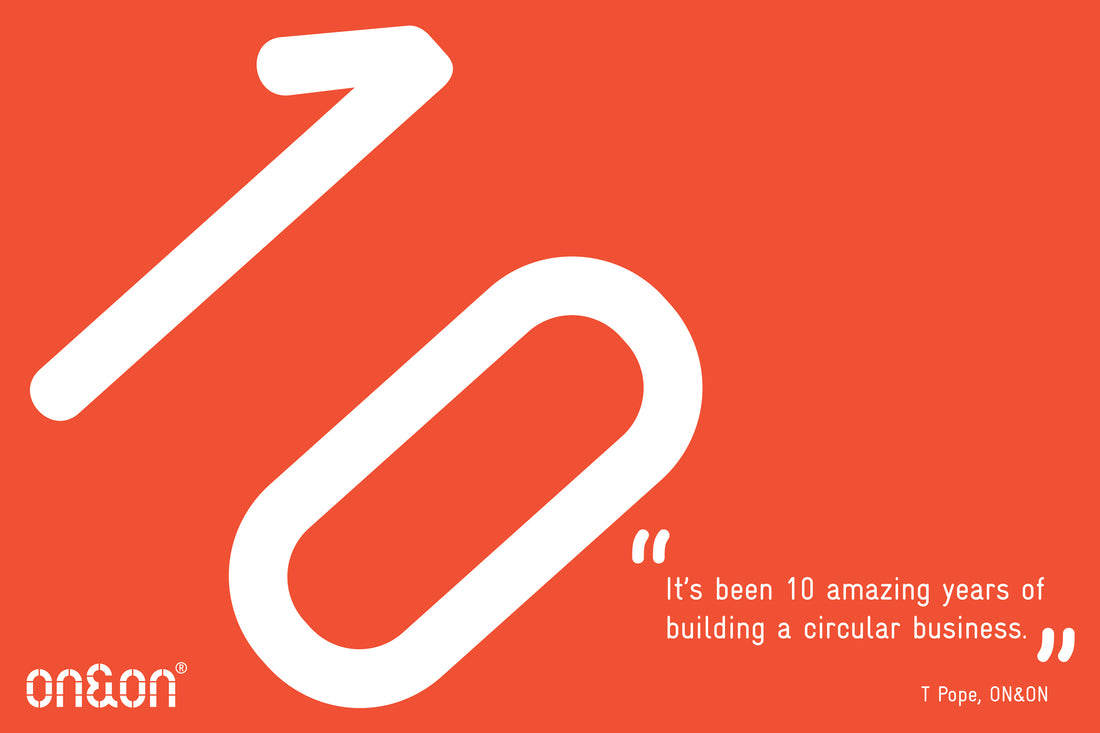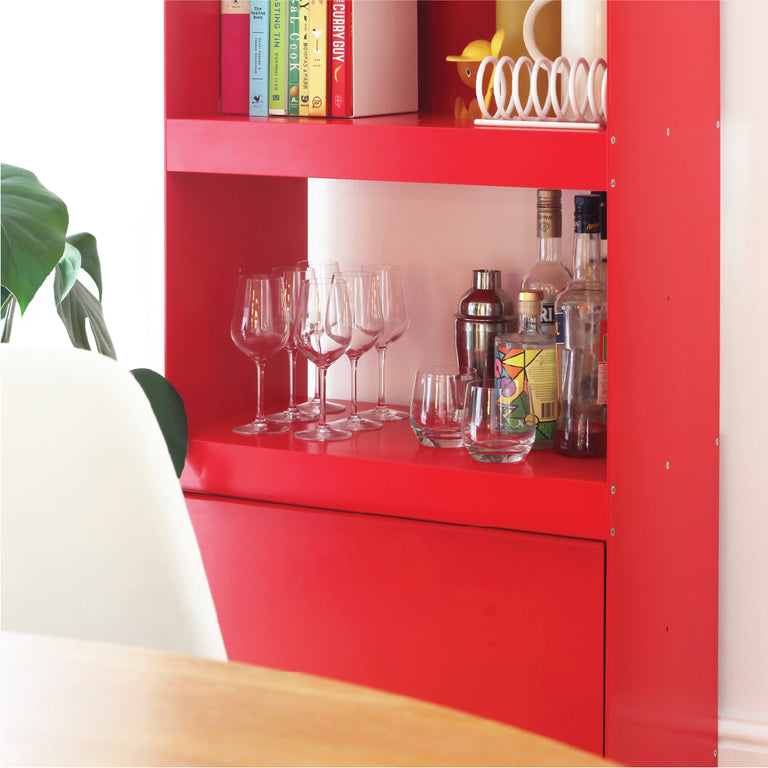8 Tips | Building a Business Fit for the Circular Economy

Fast Furniture and Circularity?
There is a rise in the production of fast furniture and the risks associated are not very well recognised but also shockingly high. It is the low cost mass-produced furniture usually using chipboard or MDF materials that are having an impact on landfills. "12 million tonnes in the US" and "over 10 million tonnes in Europe every year with less than 10% being recycled" Professor Tim Cooper explains from Fast Furniture Fix BBC Sounds. Fast furniture is not designed to last and not designed to be repaired, dismantled or easily recycled.
As well as landfill waste, fast furniture is fuelling deforestation and increases in harmful greenhouse emissions, furniture should be a part of the sustainability agenda and a part of the wider discussion. Circularity is an approach that can be used to fight landfill and Fast Furniture.
What is a Circular Business?
Circular companies take responsibility for the impact of their products or services on the environment by considering their total lifecycle. They aim to reduce emissions, minimise waste, and improve the lifespan and performance of their offerings.
In contrast, traditional companies typically follow a linear business model, but many are beginning to recognise the importance of adopting a circular approach. (For more detailed information and problems with the circular economy please see our 'Resources' at the bottom of the post).
What makes ON&ON circular?
We know that sustainability and our impact on the environment is very complex, but believe every business should aim to simplifying this complexity. We use an illustration that defines 7 steps. These steps help us visualise and form a framework that benefits both our internal culture and approach to business.

Our "circular" model helps us to manage the complexity of sustainability and our environmental impact in a more manageable way. We are continuing to work on our own journey to form a fully circular business.
1. Design
Our shelving system is a high-quality product designed to last. Its aesthetic is uncomplicated and straightforward, ensuring that the system remains consistent over time. This means you can purchase the same parts for the system, even if it's been 5, 10, or 20 years since your initial purchase.
2. Recycled aluminium
We have chosen to make our shelving system from aluminium and we aim to use materials that can be recycled, biodegraded or composted. We make all our shelving system parts in the UK to make sure our production is as local and regional as possible.
Our aluminium extrusion suppliers adhere to the highest internationally recognised standards for environmental, social, and governance practices throughout the production cycle. This includes certification from The Aluminium Stewardship Initiative for performance and Chain of Custody. Using 78% recycled aluminium and made up of pre and post consumer scrap.
3. Packaging
Our packaging is essential, designed to ensure that our products remain undamaged during transit. Our goal is for all of our packaging to be 100% biodegradable, or compostable. Our corrugated board is non coated, non dyed, FSC certified and uses 62% recycled content. Our packaging has no printed branding and is designed to be easily dismantled and recycled by our customers. However, we still have small polythene parts that we are working to eliminate although these have recycled 10% content. We are actively seeking affordable solutions from UK-based suppliers that balance production, simplicity, quality, and price.
4. Waste
Our company is committed to minimising waste. Waste may not be a waste to everyone so try to reuse it or find a purpose for it. We’ve designed and developed new products so we can use our large aluminium offcuts. We have also created a free sample service to use up our smallest pieces. Anything left over that cannot be repurposed is recycled. We focus on the continual improvement and reduction of waste material by limiting, simplifying and focusing on a small number of production processes.
- 100% of aluminium waste is repurposed or recycled.
- Corrugated board packaging is 100% recycled.
- 100% of wood waste is composted or used as fuel.
5. Easy to move
Our shelving system is made to measure, but unlike traditional fitted furniture, it's designed to be easily dismantled and moved. We include all the necessary fixings and instructions so that any competent handyman or builder can install our system. We even encourage our customers to take their shelving with them when they move. Additionally, our fitting service offers removal, cutting and storage options to help our customers move home.
6. Repurpose
Our system is adaptable and can be customised or upgraded with different parts. Our team of planners at ON&ON can help revitalise your system by creating new configurations, adjusting its size or adding new components. We offer planning and cutting services free of charge to encourage our customers to continue using their system. We will continue to innovate, designing new parts for our customers ensuring our system continues to have real functionality and purpose.
7. Buyback
Our final step is to introduce a buyback scheme, in which we purchase systems from customers and refurbish them for resale. This will complete our cycle. However, it seems that our customers are still not willing to part with their shelving systems!!
If you want to learn more about the circular economy or circular design we have included some useful links at the bottom of the post.
ON&ON some background
ON&ON has focused on creating a new type of modular shelving system that can be used across commercial and residential spaces since 2010. Launching in 2013 at Design Junction in London. ON&ON have been making and living with their systems since the early 1960s. Moving home with them, resizing them and reconfiguring them for different spaces.
 ON&ON wall shelving begins in the 1960’s
ON&ON wall shelving begins in the 1960’s

ON&ON in production today
We’re still busy building a circular business
10 years in and we still have a lot to learn and do. We are continuing to work on and improve our 7 steps, but they do provide us with greater clarity and focus.
Our next large challenge is to understand how we can export in greater volumes in a more carbon-neutral way…. If you’re interested in our journey please follow us or share our post.
#circulardesign #circulareconomy #circularbusiness #designthinking#madebyonandon #onandonshelving
8 Tips for building a circular business?
As with all self-financed start-ups, it hasn’t been plain sailing. We’ve made some mistakes, but we’ve also got a lot of things right. In no particular order, we’ve created 8 circular tips for any start-up. We may have been ahead of the curve….
#1 Start off in the right direction
We know it’s far more productive if you get things right the first time around. To go back and change a design, process or service is difficult. It takes additional time, energy and commitment and to do it for no financial reward is hard.
#2 Design will not fix everything
“Design thinking” helps us create processes and services at the same time as producing products, but in reality, most designers tend to be siloed and have little influence over different areas of a business. It is a larger business problem to solve and to be circular services and products (PSS) may need to be created in tandem.
#3 Be strategic
It is essential to be strategic and to plan your growth rather than it being incremental. To be circular means you really need to understand where you are going. Create a circular model that will fit your capabilities and resources.
#4 Build long-term value
If you’re only interested in building something for short-term profit or a quick way to make money then circular is probably not for you. If you are not careful circular can cost you more, requiring an investment in more time, money, resources and new suppliers.
#5 Small business thinking
Small company or a “boot strapping” attitude can be beneficial, we’ve found if your ‘values’ are right it makes you think in a more circular way, it makes you thrifty and more creative. Creating a waste nothing recycle, reuse everything attitude.
#6 Don’t rush
This also makes us believe the opposite, big business can create unnecessary unhealthy growth and investment can make us more wasteful and more linear. So don’t throw too much money at becoming circular, too much can be a bad thing and it will take time to get it right.
#7 Inside out
Get your company/brand values right from the top of the business down. To make it work, circular and sustainability needs to be built into your company. It needs to be a joined-up part of the business, not an add-on, initiative or communications exercise. Your internal and external communications will eventually become the same thing.
#8 Build your connections
Create a more joined-up business. This has several benefits, giving you greater control and faster communication. To be circular people have to be more inclusive and work together better, you need to work across the business not just up and down.
We believe every business can apply aspects of a circular approach and that we should take responsibility for all that we produce and do. We haven’t taken a sentimental view of our planet and climate change, but something more straightforward and practical. We believe we can all make better products and better businesses with less impact.
At ON&ON we have built circularity into our business, used our brand values to provide direction, built a circular plan and used our name to help communicate who we are.
The Circular Economy is getting popular – Any support for SMEs?
It is good to hear that awareness is growing and that bigger business is getting on board with the circular economy, like the Ikea Group partnering with the Ellen McArthur Foundation, but we hope it’s being attracted for the right reasons and is not just using it for greenwashing as we’ve seen around 2007.

Ikea Group’s ambition to be circular by 2030 is a big ask, but let us see how it develops. We hope they share the things they learn along the way. Our concern is that anything that becomes fashionable or uses the term rapid is generally not built for the long-term. It’s an inherent problem, any short-term financial investment to make a fast profit means there is less long-term development.
Financing may make it easier for larger companies with deeper pockets to make change, but should there be more financial support for small businesses? We believe it will be easier for small growing businesses and start-ups to become circular, easier to start off in the right direction than to change direction. SMEs make up 99.9% of the UK economy with a turnover of around half of the UK Private sector. FSB click here.
We can see what’s coming
If the environment and circular economy is to be taken seriously people and small businesses will need more help. If everyone has to change from a linear model to a circular model it’s not going to be easy.
Resources
Ellen MacArthur Foundation – is a charity that works with business and education to accelerate the transition to a circular economy https://www.ellenmacarthurfoundation.org/ An introduction by founder Ellen MacArthur youtube video helps explain how they started in 2010.
IDEO – is a global design and innovation company that has helped the Ellen McArthur Foundation. They have produced many helpful design tools and processes to help businesses change and start thinking about being circular. https://www.circulardesignguide.com/ Tim Brown CEO of IDEO introduces design and the circular economy.
Harvard Business Review - 3 simple strategies. The Circular Business Model. Easy to understand and cuts through some of the complexity. Business models and circularity doesn't always work and you will need a model to fit your own capabilities and resources.

